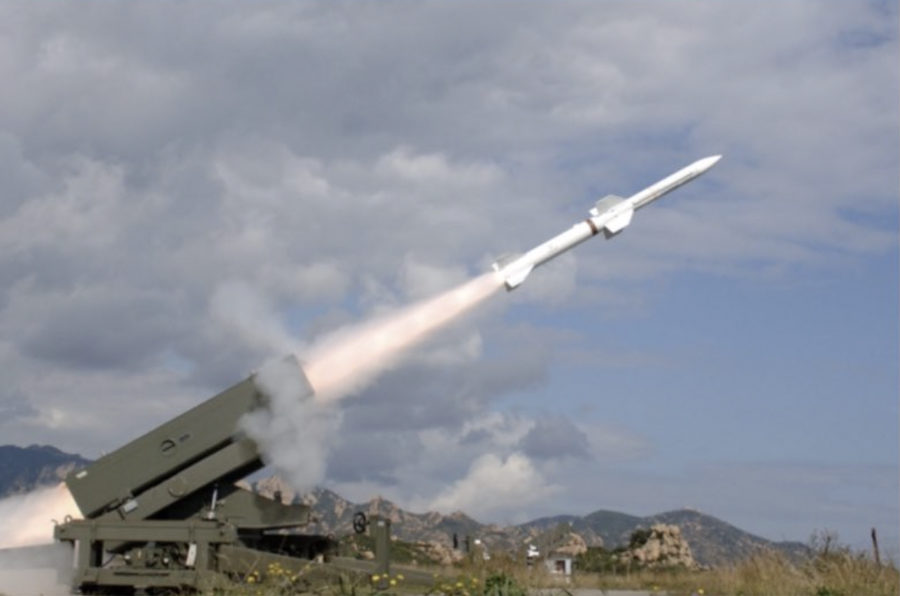The U.S. transferred a record $80.9 billion worth of military equipment and services to other countries in fiscal 2023, a 55.9 percent increase over the fiscal 2022 level of $50.9 billion, according to the U.S. State Department.
“This is the highest annual total of sales and assistance provided to our allies and partners,” a State Department release said.
The total marks progress in State’s goal of accelerating FMS cases after an internal review last year of how the process could be sped up.
Of the overall figure, $62.25 billion was funded by “U.S. ally and partner nations,” while the rest was financed by the U.S. The roughly $18 billion remainder includes about $4 billion through the foreign military financing program and $14.68 billion for State Department programs such as anti-narcotics trafficking enforcement and de-mining operations, as well as the Pentagon Defense Building Capacity programs such as the Ukraine Security Assistance Initiative.
From 2021-23, FMS sales averaged $55.9 billion per year, a 21.9 percent increase over the 2020-22 average of $45.8 billion per year.
The State Department provides this three-year rolling average because of the “multiyear implementation timeframe for many arms transfers and defense trade cases,” it noted in its release.
Poland was the single largest FMS customer in fiscal 2023, with over $30 billion in transfers.
Prominent examples of FMS sales in 2023 included:
- Poland: AH-64E Apache attack helicopter, $12 billion
- Poland: High Mobility Artillery Rocket System (HIMARS), $10 billion
- Germany: CH-47F Chinook Helicopters, $8.5 billion
- Australia: C-130J-30 air transports, $6.35 billion
- Canada: P-8 maritime patrol aircraft, $5.9 billion
- Czech Republic: F-35 fighters and munitions, $5.62 billion
- Republic of Korea: F-35 fighters, $5.06 billion
- Poland: Integrated Air and Missile Defense Battle Command System, $4.0 billion
- Poland: M1A1 Abrams Main Battle Tanks, $3.75 billion
- Kuwait: National Advanced Surface-to-Air Missile System (NASAMS) Medium-Range Air Defense System (MRADS), $3.0 billion
- Germany: AIM-120C-8 Advanced Medium-Range Air-to-Air Missiles (AMRAAM), $2.90 billion
The State Department also provided figures for Direct Commercial Sales, which are not managed by the FMS program but which require congressional approval. The total of licensed Direct Commercial Sales from U.S. companies to foreign customers was $157.5 billion in fiscal 2023, a 2.5 percent increase from the $153.6 billion recorded in fiscal 2022.
The three-year rolling average for DCS was $124.9 billion, a 16.5 percent change from the previous three-year period.
DCS “includes the value of hardware, services, and technical data authorized from exports, temporary imports, re-export, re-transfers and brokering,” according to a State press release.
State also noted that the number of DCS cases adjudicated rose six percent in fiscal 2023 versus 2022, from 22,138 to 23,474. The “Total Licensed Entities” involved also rose 2.9 percent, reflecting a wider defense industrial base doing defense business.
Prominent examples of DCS sales in 2023 included:
- Italy: F-35 wing assemblies and sub-assemblies, $2.8 billion
- India: GE F414-INS6 engine hardware, $1.8 billion
- Singapore: F100 engines and spare parts, $1.2 billion
- South Korea: F100 engines and spare parts, $1.2 billion
- Norway/Ukraine: NASAMS, Norway and Ukraine Ministries of Defence, $1.2 billion
- Saudi Arabia: Patriot Guided Missiles, $1 billion
State noted that it follows “a holistic approach when reviewing arms transfer decisions,” as they will have “potential long-run implications for regional and global security.”
The “holistic approach includes consideration” of U.S. conventional arms transfer policies and takes into account “political, social, human rights, civilian protection, economic, military, nonproliferation, technology security, and end use factors to determine the appropriate provision of military equipment and the licensing of direct commercial sales of defense articles to U.S. allies and partners.”
